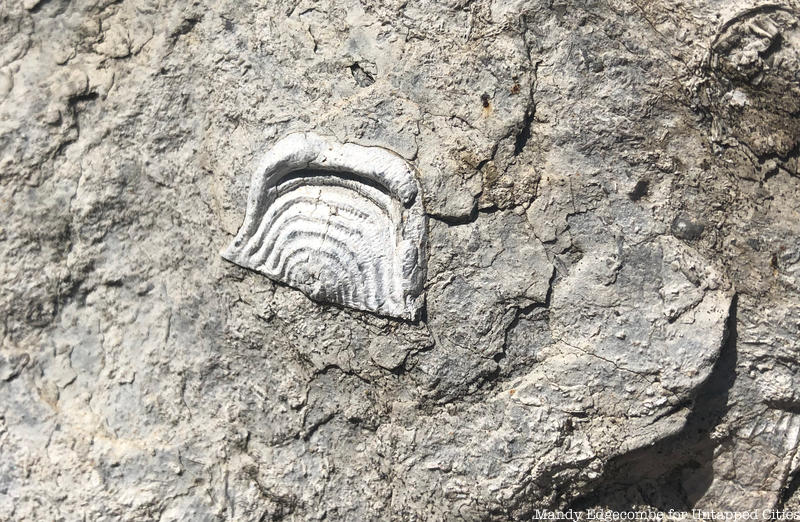5. There are Fossils Embedded in the Bridge

The two towers and anchorages of the Brooklyn Bridge are made of predominantly natural cement and limestone from the Hudson Valley. The natural cement came from near Rosendale, New York where there was a very successful quarry founded in 1825. This same cement was used to build the interior of the pedestal of the Statue of Liberty and fill Fort Wood which she was placed on top of. When this space was filled, it was the largest concentration of cement in the world.
The limestone blocks came from Kingston, New York and since limestone is a sedimentary rock, there are fossils in it. Many examples of various fossil types can be found along the walls of both anchorages, though the Manhattan anchorage is inaccessible. Mandy Edgecombe, a trained naturalist and guide on our Secrets of the Brooklyn Bridge tours, tells us, “If you walk west along the blocks (after checking out the Roebling statues in the park) you will start seeing small features exposed such as rugosa corals, brachiopods, and we even found a trilobite!” The area these blocks were mined from was covered by a warm, shallow sea about 400 million years ago and is called the Rondout Formation by geologists.





